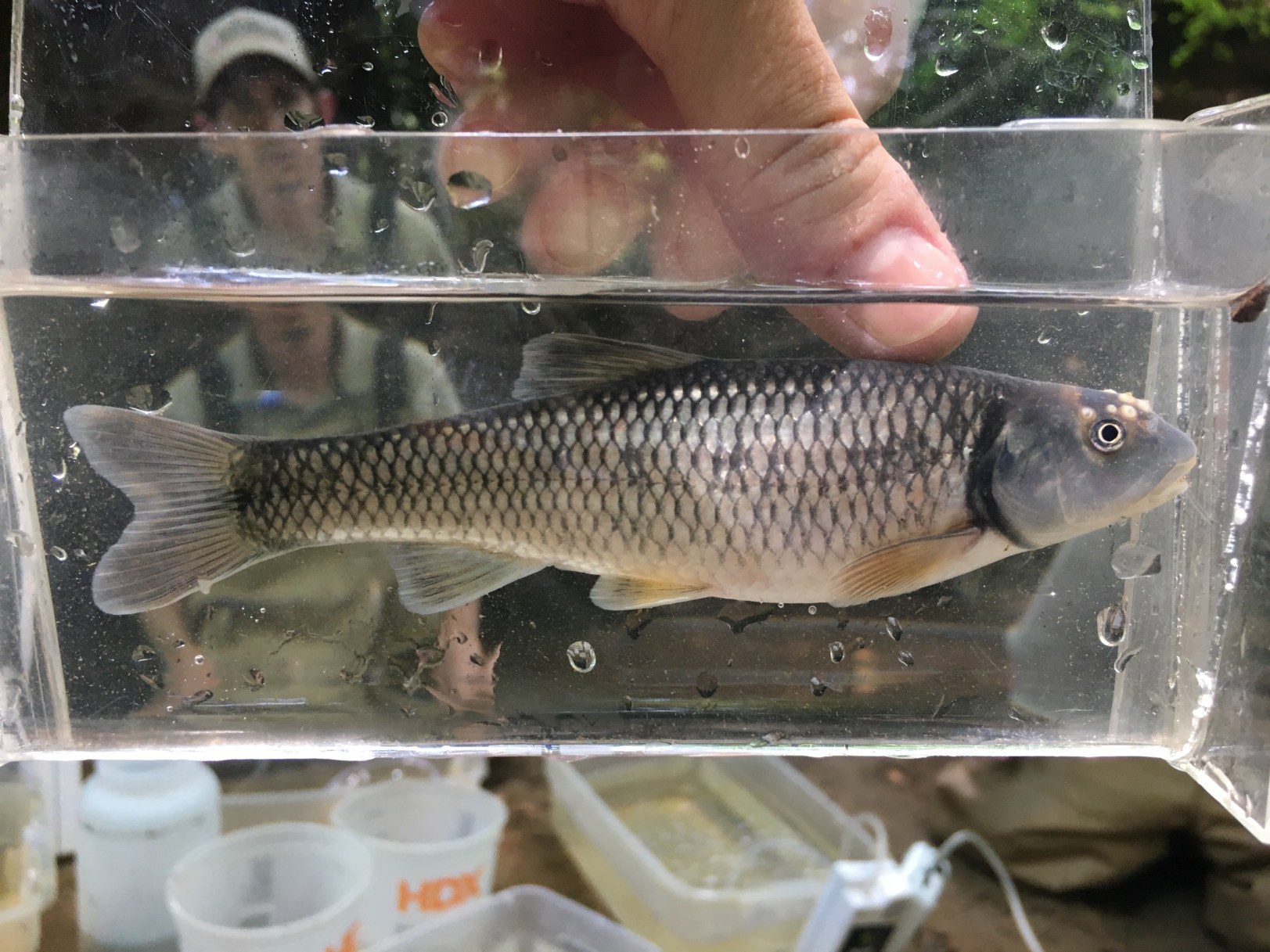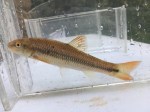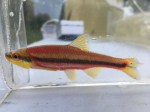If you’re from the South, you’ve most likely heard of a fish with the nickname “horny head.” This usually refers to several species of chubs found in small creeks, but most commonly refers to the Bluehead Chub (Nocomis leptocephalus). For those of you who haven’t heard of horny heads, I bet you’re wondering where that nickname came from.
During spawning season, a good portion of males in the family Cyprinidae (carps & minnows) grow tubercles mainly concentrated on their heads- aka horny heads! These tubercles are nodules that are made out of keratin, just like our nails. The main use of these tubercles is to attract a mate, surprisingly, but depending on their size and placement on the body they might have different functions. Some scientist think that the smaller ones that can extend down the body are used as mechanoreceptors to help “feel” for a mate.
Bluehead Chubs’ heads swell up during spawning season and their tubercles are on the larger side. These are for show: to impress the ladies and scare off other males. This species of freshwater fish is a hopeless romantic. Bluehead Chubs build nests then guard them to impress the females. The most fascinating part is that the nests are built from gravel that the males pick up and carry in their mouths. But not only is that cool, Blueheads will go out of their way to find every last piece of gravel in a creek if there isn’t an abundance of that substrate. These gravel mounds are clearly visible from outside the stream and are also utilized by another species, the Yellowfin Shiner (Notropis lutipinnis). These two species have a symbiotic relationship over the mound: the Blueheads tend to the nest and keep it free from silt, while the Yellowfin Shiners use it for spawning as well. This is a mutualistic relationship because the Yellowfin Shiners get egg protection from the Blueheads, while the addition of more eggs in the nest decreases the probability of your offspring being predated.
Both species are very common in creeks throughout the Piedmont ecoregion of Georgia. The piedmont is made up of parts of the Coosa, Tallapoosa, Chattahoochee, Oconee, Flint, Ocmulgee, Savannah, and Ogeechee river basins, which encompasses the middle of Georgia north of the Fall Line. Both species are also very tolerant to stream pollution and can handle more stress than other freshwater species such as darters. All they need is love and a little bit of gravel!




Leave a comment